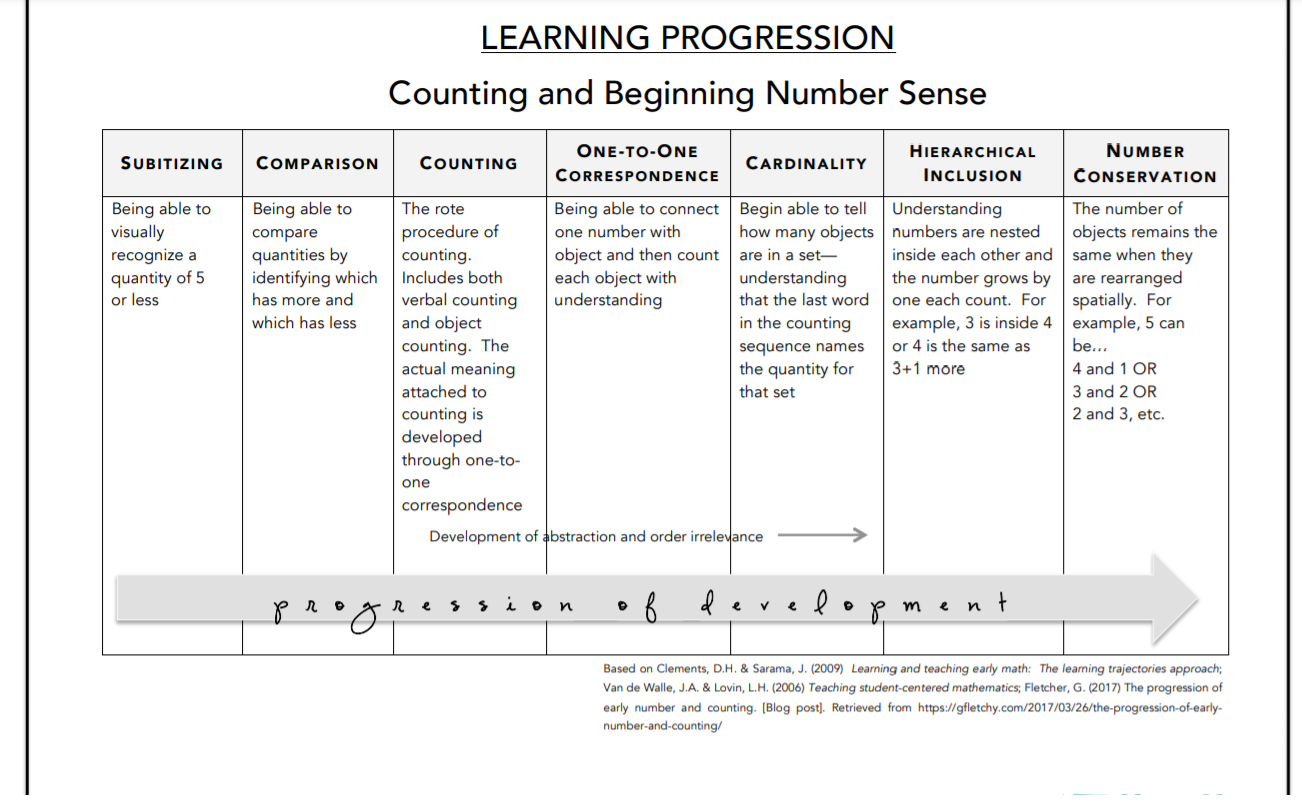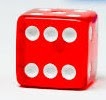Learning Progression: Counting and Beginning Number Sense

Learning to count seems so easy, right? You begin by singing number songs and counting objects. However, did you know there is a learning progression to counting? Success in mathematics begins with developing a sense of number through counting and quantity? Often, I have TK-K teachers or parents tell me that their child can count to 20, and they can, which is excellent. They think that because the student can count to 20 that they understand what 20 means. This is not always true. They need to develop the understanding that 20 has a value. Counting from 1 to 10 or even 100 is helpful, but this skill alone is not the same as learning how to count. Students are great about saying number names. For example, you show the child a dice,
 and the student will say, “six,” but then we ask them to count the dots to prove that there are six dots and they may say 1,3,2.5,4,6. They may even count correctly but 1,2,3,4,5,6, but when asked to touch or move the objects when counting, the child may touch two objects at a time or keep counting when they have already counted all the items in the set. The child is relating an image to a word number or a sound, but they do not understand that the word six, represents the value of six. Learning to count is way more complicated then we think. It is important that we take time as teachers/parents to understand and develop the important skills of learning to count and number sense in our students. Graham Fletcher is a math genius, so please take the time to watch the video below. The video will help you develop a better understanding of The progression of early numbers and Counting.
and the student will say, “six,” but then we ask them to count the dots to prove that there are six dots and they may say 1,3,2.5,4,6. They may even count correctly but 1,2,3,4,5,6, but when asked to touch or move the objects when counting, the child may touch two objects at a time or keep counting when they have already counted all the items in the set. The child is relating an image to a word number or a sound, but they do not understand that the word six, represents the value of six. Learning to count is way more complicated then we think. It is important that we take time as teachers/parents to understand and develop the important skills of learning to count and number sense in our students. Graham Fletcher is a math genius, so please take the time to watch the video below. The video will help you develop a better understanding of The progression of early numbers and Counting.Graham Fletcher The Progression of Early Number Sense

